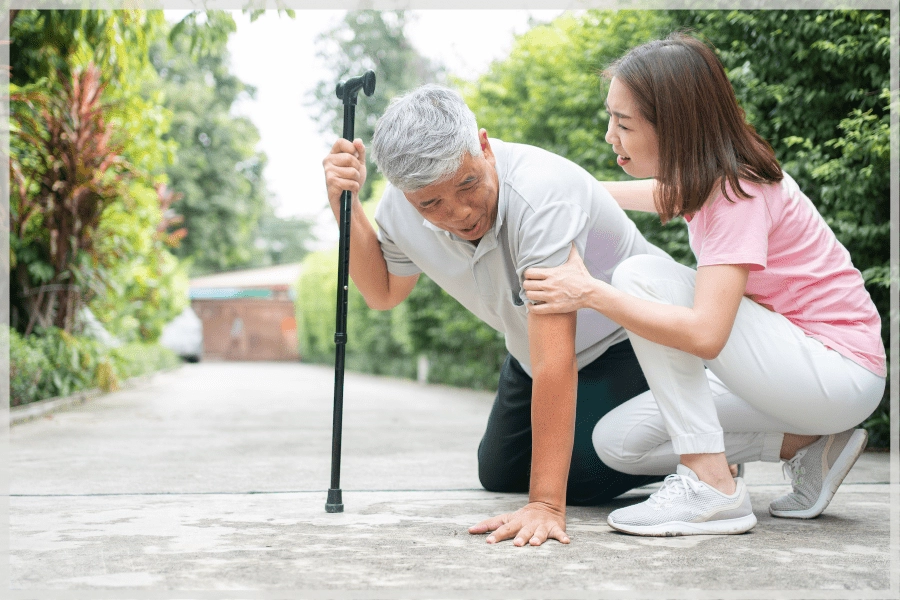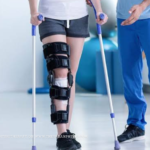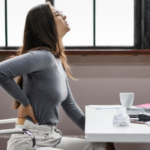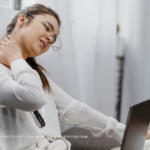You feel a little wobbly now and then—it’s probably nothing, right?
Maybe you grabbed the handrail a bit quicker than usual going down the stairs. Or you felt unsteady getting out of bed in the dark. Perhaps you’ve noticed you’re not quite as confident on uneven ground as you used to be.
“It’s just age,” you tell yourself. “Everyone gets a little less steady over time.”
But here’s the truth nobody wants to hear: one missed step could be all it takes. Fix it before it’s too late.
That small wobble you’re dismissing today could be tomorrow’s fall. And that fall? It could change everything—your independence, your confidence, even your ability to live in your own home.
The good news? Declining balance isn’t inevitable, and it’s absolutely fixable. But only if you stop ignoring it.
The Silent Decline You Don’t See Coming
Balance doesn’t disappear overnight. It erodes gradually, so slowly that most people don’t notice until they’re already at risk.
Think about it: When was the last time you stood on one leg to tie your shoe? Walked heel-to-toe in a straight line? Turned your head quickly while walking? These everyday movements require sophisticated balance systems that start declining as early as your 40s.
What’s Actually Happening to Your Body After 40
our balance depends on three main systems working together seamlessly:
Your vestibular system (inner ear) tells your brain about head position and movement. After 40, this system begins to deteriorate, sending less accurate signals about where you are in space.
Your vision provides crucial information about your surroundings and body position. But aging eyes process visual information more slowly, especially in low light or while moving.
Your proprioception (body awareness) relies on sensors in your muscles and joints. These sensors become less sensitive with age, making it harder to feel where your body is without looking.
Add in natural muscle loss (sarcopenia), decreased joint flexibility, slower reflexes, and reduced strength—and you’ve got a perfect storm for falls.
The kicker? Most people don’t realize their balance is declining until they have a close call or an actual fall.
The Real Cost of “Just a Fall”
If you think a fall is just an embarrassing moment you’d rather forget, think again. For people over 40—and especially over 65—falls are serious medical events with life-altering consequences.
The Statistics Are Sobering
Falls are the leading cause of injury-related deaths in adults over 65. But the impact starts much earlier:
- One in four adults over 65 falls each year
- Falls result in more than 3 million emergency room visits annually
- Hip fractures from falls have a mortality rate of 20-30% within the first year
- 50% of people who fracture a hip never regain their previous level of mobility
Beyond the Physical Injury
Even if a fall doesn’t result in broken bones, the consequences ripple outward:
Fear of falling becomes a constant companion, leading many people to limit their activities. You stop going out, avoid stairs, give up hobbies—essentially restricting your own life out of fear.
Loss of independence often follows. Maybe you need help with tasks you used to do alone. Maybe you can’t live by yourself anymore. One fall can trigger a cascade of losses.
Social isolation creeps in when you stop attending events, visiting friends, or participating in activities you love. This isolation is linked to depression, cognitive decline, and poorer health outcomes.
Reduced quality of life becomes the new normal as fear and limitation replace confidence and freedom.
The Warning Signs You’re Probably Ignoring
Your body is already sending signals that your balance is declining. Most people dismiss them. Don’t be most people.
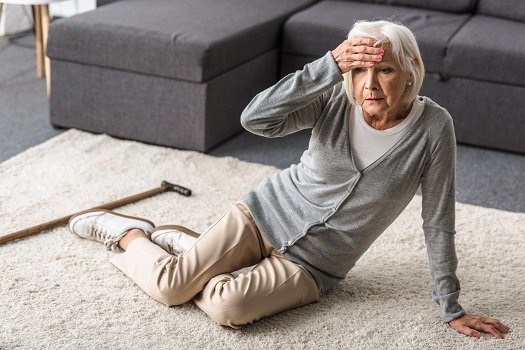
Pay attention if you:
- Feel unsteady when walking on uneven surfaces like grass or gravel
- Need to hold onto furniture, walls, or counters when moving around your home
- Feel dizzy or lightheaded when standing up quickly
- Have difficulty getting in and out of the car or bathtub
- Notice you’re looking down at your feet more when walking
- Feel less confident walking in the dark or in crowded places
- Catch yourself stumbling more often, even if you don’t fall
- Avoid activities that require good balance (like dancing, hiking, or sports)
- Feel like you’re moving more slowly and cautiously than you used to
- Have had even one unexplained fall or “near miss” in the past year
If you recognize yourself in three or more of these, your balance is already compromised. But here’s the empowering part: you can do something about it.
Why “Just Being Careful” Isn’t Enough
Many people respond to declining balance by becoming more cautious. They slow down, limit activities, and try to avoid risky situations.
This seems logical, but it’s actually counterproductive.
Being overly cautious creates a vicious cycle. When you move less and avoid challenging your balance, your balance systems weaken further. The muscles you need for stability atrophy. Your coordination degrades. Your confidence plummets.
You become more fragile, not more protected.
It’s like trying to prevent your car from breaking down by never driving it. The lack of use causes its own problems.
What you actually need is the opposite approach: strategic, progressive balance training that rebuilds your stability systems from the ground up.
And that’s exactly what fall prevention physiotherapy does.
How Physiotherapy Prevents Falls (And Saves Lives)
Physiotherapy for fall prevention isn’t about bubble-wrapping your life. It’s about making you genuinely more stable, coordinated, and confident.
A physiotherapist specializing in balance and fall prevention will work with you to rebuild the systems that keep you upright and safe.
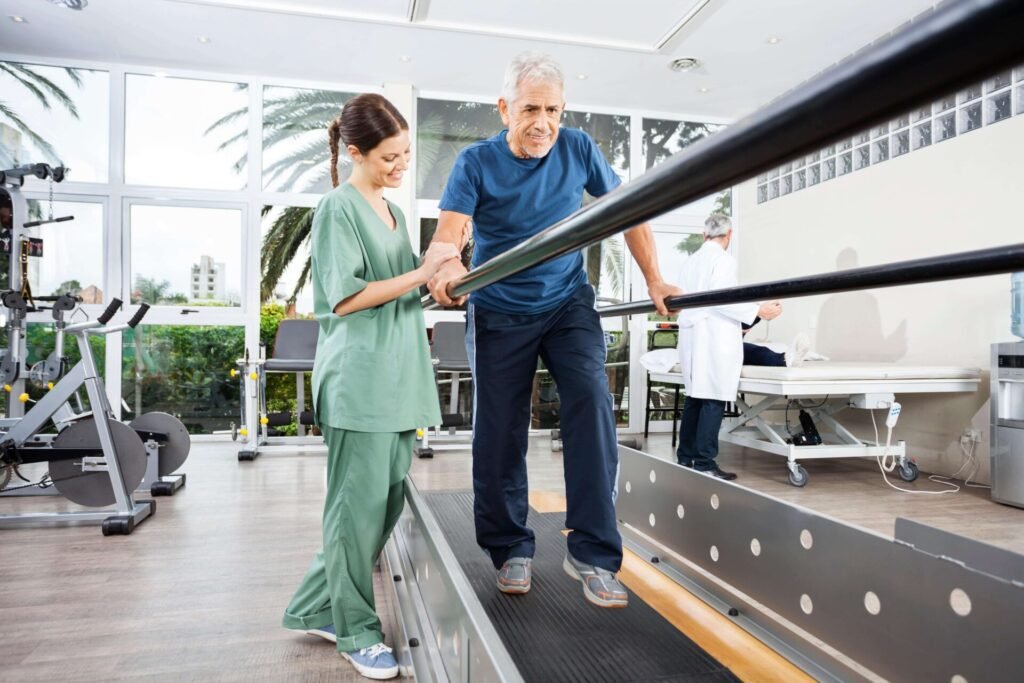
What Happens in Fall Prevention Physiotherapy
Comprehensive Balance Assessment
First, your physiotherapist will evaluate all aspects of your balance. They’ll test your:
- Static balance (standing still on different surfaces)
- Dynamic balance (maintaining stability while moving)
- Reactive balance (recovering from unexpected disturbances)
- Gait patterns and walking mechanics
- Muscle strength, particularly in your legs and core
- Joint flexibility and range of motion
- Vestibular function (inner ear balance system)
- Vision and how it integrates with movement
- Proprioception and body awareness
They’ll also identify environmental risk factors in your daily life and any medical conditions affecting your balance.
Personalized Balance Training Program
Based on your assessment, they’ll create a targeted program that might include:
Strength training focused on the muscles that keep you stable—quads, glutes, hip stabilizers, and core. Stronger muscles mean better control and faster reactions.
Balance exercises that progressively challenge your stability systems. You might start with simple standing exercises and advance to dynamic movements, uneven surfaces, and dual-task training (balancing while doing something else).
Gait training to improve how you walk, ensuring proper stride length, foot clearance, and weight shifting. Many falls happen because of shuffling, tripping, or poor walking patterns.
Proprioception exercises that retrain your body’s awareness of where it is in space. These might involve balance boards, foam pads, or exercises with eyes closed.
Vestibular rehabilitation if inner ear issues are affecting your balance. Specific exercises can retrain your vestibular system and reduce dizziness.
Functional training that mimics real-life situations—getting up from a chair, reaching for high shelves, walking while turning your head, navigating stairs, and recovering from stumbles.
Flexibility work to maintain the joint mobility you need for proper movement patterns and balance reactions.
Real Results From Real Training
The evidence for physiotherapy-based fall prevention is overwhelming:
Research shows that structured balance and strength training can reduce fall risk by up to 40%. That’s not a small improvement—that’s potentially life-saving.
Participants in fall prevention programs report:
- Greater confidence in their balance and movement
- Improved ability to perform daily activities
- Reduced fear of falling
- Better quality of life and independence
- Increased physical activity levels
And here’s the best part: improvements can begin within weeks of starting a consistent program.
Balance Training You Can Start Today
While working with a physiotherapist is ideal, you can begin improving your balance right now. Here are some safe, effective exercises to get started:
Single Leg Stance Stand near a counter or wall for safety. Lift one foot slightly off the ground and hold for 10-30 seconds. As you improve, try it with your eyes closed or while moving your head.
Heel-to-Toe Walk Walk in a straight line, placing the heel of one foot directly in front of the toes of the other foot, like walking a tightrope. Do this for 20 steps.
Sit-to-Stand Practice Practice standing up from a chair and sitting back down without using your hands. This builds leg strength and improves the movement pattern you do multiple times daily.
Weight Shifts Standing with feet hip-width apart, shift your weight from side to side, then front to back. Lift one foot slightly when shifting weight away from it.
Marching in Place Lift your knees as high as comfortable while marching in place. Hold onto something for support if needed. This improves strength and coordination.
Remember: Start slow, stay near support, and listen to your body. These exercises should challenge you without putting you at risk.
Beyond Exercise: The Complete Fall Prevention Strategy
While balance training is crucial, preventing falls requires a holistic approach:
Home Safety Modifications
- Remove tripping hazards like loose rugs and clutter
- Improve lighting, especially in hallways and stairs
- Install grab bars in bathrooms
- Ensure handrails on all stairs
- Keep frequently used items within easy reach
Vision Care Regular eye exams and updated prescriptions are essential. Vision changes affect balance significantly.
Medication Review Some medications cause dizziness, drowsiness, or blood pressure changes that increase fall risk. Talk to your doctor about your complete medication list.
Proper Footwear Wear supportive, non-slip shoes. Avoid walking in socks, slippers without backs, or shoes with slick soles.
Bone Health Maintain strong bones through adequate calcium, vitamin D, and weight-bearing exercise. If you do fall, strong bones are less likely to fracture.
The Time to Act Is Now
Here’s the hard truth: you’re reading this for a reason. Maybe you’ve noticed changes. Maybe you’ve had a scare. Maybe you’re worried about someone you love.
That voice in your head saying “I should do something about this”? Listen to it.
Falls don’t happen to “other people.” They happen to active, independent adults who thought they were fine—until suddenly they weren’t.
The difference between those who fall and those who don’t often comes down to one factor: whether they took action before it was too late.
You have a choice. You can ignore the warning signs, hope for the best, and restrict your life out of fear. Or you can take control, rebuild your stability, and maintain the active, independent life you want.
Your Next Steps
Getting started with fall prevention is simpler than you think:
- Schedule a balance assessment with a physiotherapist who specializes in fall prevention. This establishes your baseline and identifies your specific risk factors.
- Commit to consistency. Balance training works, but only if you do it regularly. Think of it as essential maintenance, like brushing your teeth.
- Progress gradually. Don’t try to do everything at once. Small, consistent improvements compound over time.
- Make your environment safer. Address home hazards while you’re building your physical capabilities.
- Stay engaged. Continue activities you enjoy. The goal isn’t to limit your life—it’s to expand it safely.
The Bottom Line
That wobble you’re ignoring? It’s your body’s early warning system. Your balance doesn’t have to decline with age, and falls don’t have to be inevitable.
With proper training, most balance issues can be significantly improved or even reversed. You can rebuild strength, retrain coordination, and restore confidence. You can maintain your independence, stay active, and live life on your terms.
But you have to start before the fall happens, not after.
Because here’s the thing about falls: they’re preventable—until they’re not. And once you’ve fallen, you’re playing catch-up, recovering from injury, rebuilding what was lost.
Don’t wait for a fall to take balance seriously. Fix it while you can still prevent it.
Your future self—the one still hiking, traveling, playing with grandkids, and living independently—will thank you for taking action today.
